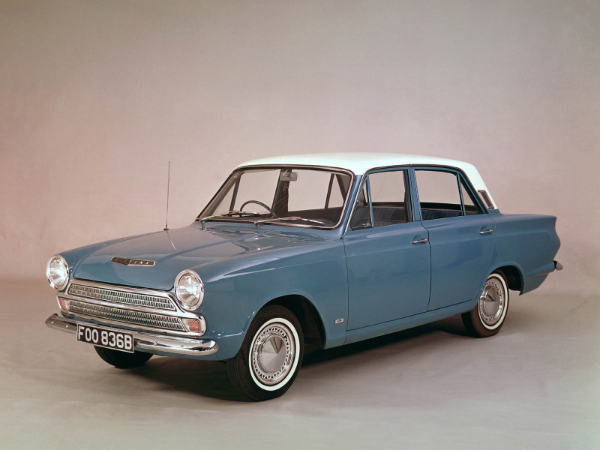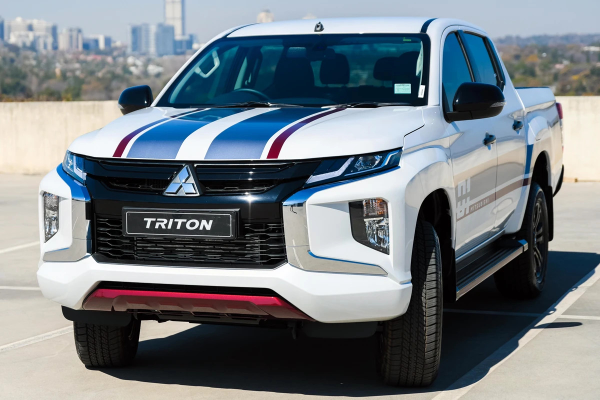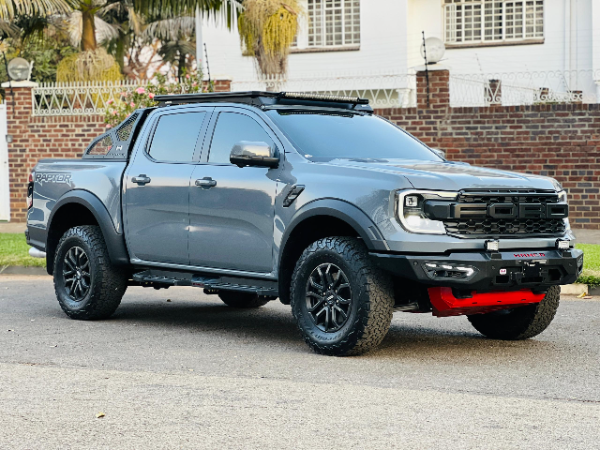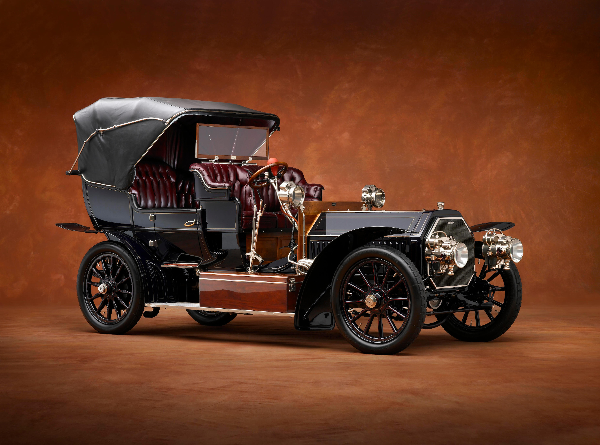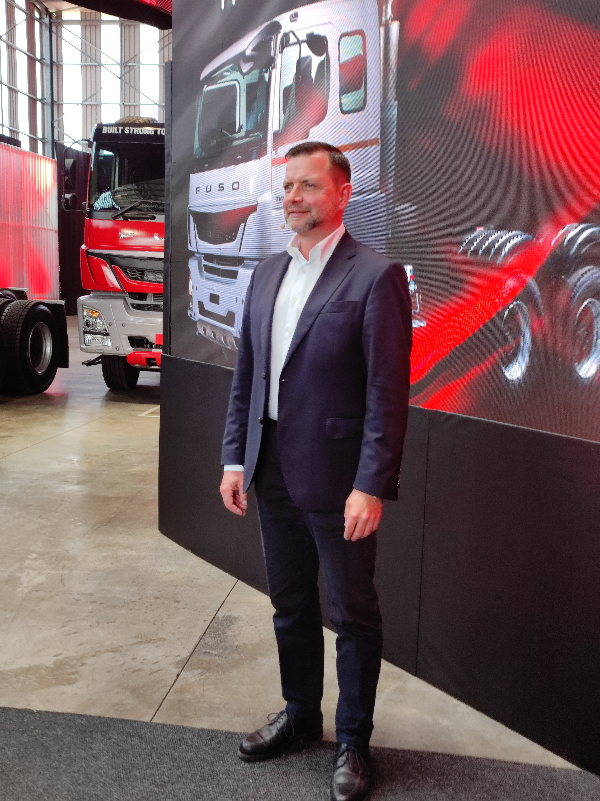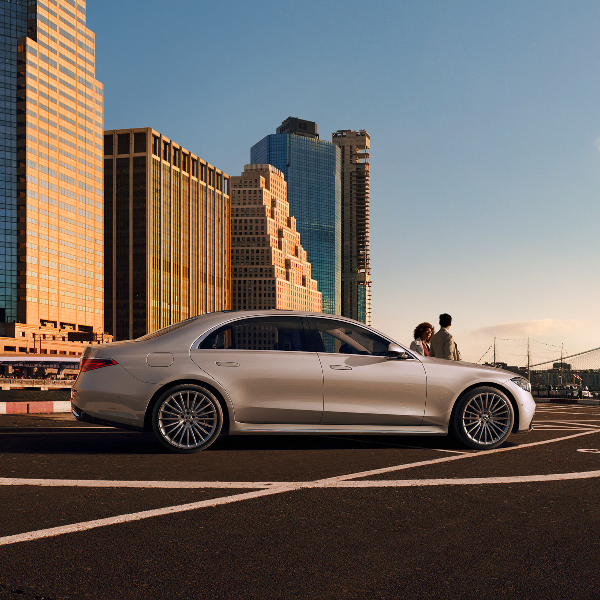Cortina boosted Ford’s fortunes in Southern Africa
• Launched in the latter half of 1962, the Mark I Cortina could reach a maximum speed of 125 km/h thanks to its 1.2-litre engine.
• Front disc brakes, a rev counter, a short gear lever, and a lowered suspension were all features of the Cortina GT.
• From 1962 until 1983, five versions of the Cortina were manufactured in South Africa, and over 300,000 vehicles were sold. Thousands found their way into Zimbabwe
Ford's Cortina automobile pushed the boundaries of what at the time was a compact or medium-sized vehicle. A 1.2-litre engine, more often seen in smaller cars, was a standard issue for the Mark I model when it debuted in late 1962. Still, the available performance was on par with that of mid-size automobiles from the same period, and the exterior packing was no different.
Although it had a boot that was far larger than its competitors, the original Cortina was really a four- or five-seater. Right away, consumers were ready to give the new Cortina a spin and see whether its performance could match expectations for a medium-sized vehicle, even if it was priced more than the larger versions with more powerful engines.
Overall, it was successful. In those days, a 1200cc motorcycle could easily reach 125 km/h, and it could accelerate from 0 to 100 km/h in under 20 seconds. Along with making the Cortina acceptable, Ford had a series of cars planned for 1963 and 1964 that would change the way Ford fans saw the brand.
As immediate successors to the 1200 vehicles, the 1500s were available in sedan and station wagon body styles, providing even greater towing capacity. Afterwards, the Cortina GT, an immediate classic, arrived in late 1963. Front disc brakes, a rev counter, a short stock gear lever, and a lowered suspension were some of its features. A Weber carburetor, branch manifold, increased compression, somewhat more aggressive camshaft, trimmer, and, of course, those GT badges were the most notable modifications to the 1.5-litre engine.
In 1964 and 1965, Ford's use of the revered Gran Turismo suffix—previously reserved for exotics like Ferraris, Maseratis, Aston Martins, and similar vehicles—sparked heated debate in Car Magazine's mail sections. However, the old-fashioned purists didn't understand that with only a few capital letters, Ford had made it very fashionable to possess a cheap, mass-produced light automobile that could provide a daily thrill.
Ford wasn't satisfied with the 61 kW GT version, so they commissioned Formula One expert Colin Chapman to build the Lotus Cortina, which set new records in races throughout the world. Just in time for the Cortina's debut, Ford launched their Total Performance global marketing campaign, which included participation in racing events across a variety of categories, including saloon car championships, rallying, the Le Mans 24-Hour, and the Indianapolis 500.
Regrettably, the opportunity to purchase the specialist 78kW twincam Lotus Cortina was never presented to average Zimbabweans.
The worldwide motorsports programme that supported the Cortina's practicality garnered tremendous attention for the Cortina and, by extension, for Ford as a worldwide brand. After selling 60,000 units in its first four years on the market, the Cortina surpassed all other cars sold in Southern Africa by the mid-1960s. The completely restyled Mk II version was released in early 1967 and was another commercial hit. The now-iconic Kent Crossflow four-cylinder engine, which was included in this somewhat shorter but broader version, would go on to power tens of thousands of race cars and sports car specials throughout the globe for more than twenty years.
Without a doubt, the Mark II Cortina outdid its predecessor, the Mark I, in terms of equipment and sophistication. The 1971 arrival of the Mk III version, however, was perhaps the most significant developmental leap for the Cortina during its lifespan. What started out as a little vehicle with medium-car features is now a serious mid-size challenger, and it looks even better than before because of its sleek new Coke-bottle design and the sophisticated single overhead camshaft ("SOHC") engine that was developed in Germany and installed in the top GT variant.
Strikes in the UK delayed the debut of the new Mk III in Southern Africa, preventing critical components from coming here. As a result, the Cortina fell out of the top three in sales. As soon as the Mk III went online, however, it fixed the issue.
The top GT model went through a major overhaul when it was a third-generation vehicle. Subtly removed from the lineup was the SOHC two-liter engine, replaced with the much stronger Ford Essex V6 engine, which had been built for the bigger Zephyr/Zodiac line and had already been phased out by the early 1970s. After debuting as a 2.5-litre option, this engine was later upgraded to a 3.0-litre one with a 100-kW rating, marking a significant departure from the four-cylinder GT versions that had been offered up to that point.
As a result of the revised body's improved aerodynamics, Car Magazine measured the maximum speed of the formidable V6 Mk III Cortina GT at an astounding 180 km/h. With the start of the renowned "Big Six" Cortina period, this automobile became known as a formidable performance challenger for the remainder of its career. At this time, the iconic Kent 1600 four-cylinder engine was still employed in the entry-level Cortina vehicles, which offered good performance for families looking for a no-nonsense midfielder. There was also a two-litre V4 engine option, although it was never very popular.
Also debuted around this period was the Cortina bakkie, which came with either a 2.5-litre V6 or 1.6-litre four-cylinder engine. The incredible popularity of this car necessitated its continued production even after the last Cortina sedan had been finished. Also, the pick-up was so innovative and well-planned that it was sent to the United Kingdom!
Introduced in May 1977, the Mk IV Cortina's design exemplified the late 1970s trend of knife-edge creases. An increase in glass area, a more luxurious interior, and the return of the two-litre SOHC engine as a midrange option were all features of the Mk IV. Upmarket designations like "XLE" and "Ghia" were given to the 3.0-litre V6 vehicles, while the front suspension kept the double-wishbone setup that had been adopted on the Mk III model year to replace the MacPherson strut design of the previous two generations of Cortinas. The Mk IV vehicles were easily identifiable by their squared-off headlights.
The Mk IV model range's most remarkable accomplishment was reclaiming the title of best-selling automobile in Southern Africa, a position it had not held since 1965. It is worth mentioning that by the late 1970s, many Southern Africans had downsized their automobiles due to the ongoing fuel crisis that began in late 1973. As a result, the top-selling sales figures strongly supported the medium-sized Mk IV's outstanding specification and design.
Debuting in 1980, the last Mk V Cortina was essentially a development of the similarly designed Mk IV. The new five-link rear suspension, which was also developed in Port Elizabeth, was something of which Ford in Southern Africa was justifiably proud.
As the GT replacement model, the top-of-the-line XR6 model brought the descriptive moniker into common use among Cortina speakers. The XR6 was decked up with spoilers, side stripes, pressed-steel wheels with a unique "mag-style" design, and exotic Scheel rally-style bucket seats. Subsequently, it was essentially the same Big Six Cortina, and nobody seemed to mind that its V6 engine had remained mostly unchanged for over 25 years!
According to ardent supporters who were enamored with the original Cortina GT, the special edition Cortina XR6 Interceptor, limited to 200 units, was the cherry on top for the Cortina line in Southern Africa. In order to compete at the highest level in Group One saloon car racing, it was necessary to homologate a racing model. Three Weber twin-choke carburetors, a hot camshaft, branch exhaust manifolds, an upgraded suspension, and unique alloy wheels were all standard on these. Sarel van der Merwe, Geoff Mortimer, and others raced Interceptors painted a bright red to defeat BMW 528s in the Group One division.
Simpson Ford, a dealership in Port Elizabeth, advertised the very fast X-Ocet, a hotter but less well-known variant of the Cortina XR6 at the time. The X-Ocet was just as fast as the Interceptor thanks to its upgraded 3.0-litre V6 engine and Holley four-barrel carburetor, but it was simpler to fine-tune because of its single carburetor.
After being introduced in December 1962, the Cortina had sold over 303 000 units in Southern Africa by the time manufacturing ceased in the third quarter of 1983 with the launch of the Sierra. There are still many Cortina cars and bakkies on the road today. Classic automobile enthusiasts highly value these vehicles for being dependable, simple to maintain, and aesthetically pleasing.
Until the last series was constructed, their immense racing legacy persisted. It is no exaggeration to say that this was the vehicle that firmly established the Southern Africans' perception of the Ford brand; it was designed for the individuals who carried on the tradition started by the remarkable Ford Model T in our hardy nation more than a century ago!
• Front disc brakes, a rev counter, a short gear lever, and a lowered suspension were all features of the Cortina GT.
• From 1962 until 1983, five versions of the Cortina were manufactured in South Africa, and over 300,000 vehicles were sold. Thousands found their way into Zimbabwe
Ford's Cortina automobile pushed the boundaries of what at the time was a compact or medium-sized vehicle. A 1.2-litre engine, more often seen in smaller cars, was a standard issue for the Mark I model when it debuted in late 1962. Still, the available performance was on par with that of mid-size automobiles from the same period, and the exterior packing was no different.
Although it had a boot that was far larger than its competitors, the original Cortina was really a four- or five-seater. Right away, consumers were ready to give the new Cortina a spin and see whether its performance could match expectations for a medium-sized vehicle, even if it was priced more than the larger versions with more powerful engines.
Overall, it was successful. In those days, a 1200cc motorcycle could easily reach 125 km/h, and it could accelerate from 0 to 100 km/h in under 20 seconds. Along with making the Cortina acceptable, Ford had a series of cars planned for 1963 and 1964 that would change the way Ford fans saw the brand.
As immediate successors to the 1200 vehicles, the 1500s were available in sedan and station wagon body styles, providing even greater towing capacity. Afterwards, the Cortina GT, an immediate classic, arrived in late 1963. Front disc brakes, a rev counter, a short stock gear lever, and a lowered suspension were some of its features. A Weber carburetor, branch manifold, increased compression, somewhat more aggressive camshaft, trimmer, and, of course, those GT badges were the most notable modifications to the 1.5-litre engine.
In 1964 and 1965, Ford's use of the revered Gran Turismo suffix—previously reserved for exotics like Ferraris, Maseratis, Aston Martins, and similar vehicles—sparked heated debate in Car Magazine's mail sections. However, the old-fashioned purists didn't understand that with only a few capital letters, Ford had made it very fashionable to possess a cheap, mass-produced light automobile that could provide a daily thrill.
Ford wasn't satisfied with the 61 kW GT version, so they commissioned Formula One expert Colin Chapman to build the Lotus Cortina, which set new records in races throughout the world. Just in time for the Cortina's debut, Ford launched their Total Performance global marketing campaign, which included participation in racing events across a variety of categories, including saloon car championships, rallying, the Le Mans 24-Hour, and the Indianapolis 500.
Regrettably, the opportunity to purchase the specialist 78kW twincam Lotus Cortina was never presented to average Zimbabweans.
The worldwide motorsports programme that supported the Cortina's practicality garnered tremendous attention for the Cortina and, by extension, for Ford as a worldwide brand. After selling 60,000 units in its first four years on the market, the Cortina surpassed all other cars sold in Southern Africa by the mid-1960s. The completely restyled Mk II version was released in early 1967 and was another commercial hit. The now-iconic Kent Crossflow four-cylinder engine, which was included in this somewhat shorter but broader version, would go on to power tens of thousands of race cars and sports car specials throughout the globe for more than twenty years.
Without a doubt, the Mark II Cortina outdid its predecessor, the Mark I, in terms of equipment and sophistication. The 1971 arrival of the Mk III version, however, was perhaps the most significant developmental leap for the Cortina during its lifespan. What started out as a little vehicle with medium-car features is now a serious mid-size challenger, and it looks even better than before because of its sleek new Coke-bottle design and the sophisticated single overhead camshaft ("SOHC") engine that was developed in Germany and installed in the top GT variant.
Strikes in the UK delayed the debut of the new Mk III in Southern Africa, preventing critical components from coming here. As a result, the Cortina fell out of the top three in sales. As soon as the Mk III went online, however, it fixed the issue.
The top GT model went through a major overhaul when it was a third-generation vehicle. Subtly removed from the lineup was the SOHC two-liter engine, replaced with the much stronger Ford Essex V6 engine, which had been built for the bigger Zephyr/Zodiac line and had already been phased out by the early 1970s. After debuting as a 2.5-litre option, this engine was later upgraded to a 3.0-litre one with a 100-kW rating, marking a significant departure from the four-cylinder GT versions that had been offered up to that point.
As a result of the revised body's improved aerodynamics, Car Magazine measured the maximum speed of the formidable V6 Mk III Cortina GT at an astounding 180 km/h. With the start of the renowned "Big Six" Cortina period, this automobile became known as a formidable performance challenger for the remainder of its career. At this time, the iconic Kent 1600 four-cylinder engine was still employed in the entry-level Cortina vehicles, which offered good performance for families looking for a no-nonsense midfielder. There was also a two-litre V4 engine option, although it was never very popular.
Also debuted around this period was the Cortina bakkie, which came with either a 2.5-litre V6 or 1.6-litre four-cylinder engine. The incredible popularity of this car necessitated its continued production even after the last Cortina sedan had been finished. Also, the pick-up was so innovative and well-planned that it was sent to the United Kingdom!
Introduced in May 1977, the Mk IV Cortina's design exemplified the late 1970s trend of knife-edge creases. An increase in glass area, a more luxurious interior, and the return of the two-litre SOHC engine as a midrange option were all features of the Mk IV. Upmarket designations like "XLE" and "Ghia" were given to the 3.0-litre V6 vehicles, while the front suspension kept the double-wishbone setup that had been adopted on the Mk III model year to replace the MacPherson strut design of the previous two generations of Cortinas. The Mk IV vehicles were easily identifiable by their squared-off headlights.
The Mk IV model range's most remarkable accomplishment was reclaiming the title of best-selling automobile in Southern Africa, a position it had not held since 1965. It is worth mentioning that by the late 1970s, many Southern Africans had downsized their automobiles due to the ongoing fuel crisis that began in late 1973. As a result, the top-selling sales figures strongly supported the medium-sized Mk IV's outstanding specification and design.
Debuting in 1980, the last Mk V Cortina was essentially a development of the similarly designed Mk IV. The new five-link rear suspension, which was also developed in Port Elizabeth, was something of which Ford in Southern Africa was justifiably proud.
As the GT replacement model, the top-of-the-line XR6 model brought the descriptive moniker into common use among Cortina speakers. The XR6 was decked up with spoilers, side stripes, pressed-steel wheels with a unique "mag-style" design, and exotic Scheel rally-style bucket seats. Subsequently, it was essentially the same Big Six Cortina, and nobody seemed to mind that its V6 engine had remained mostly unchanged for over 25 years!
According to ardent supporters who were enamored with the original Cortina GT, the special edition Cortina XR6 Interceptor, limited to 200 units, was the cherry on top for the Cortina line in Southern Africa. In order to compete at the highest level in Group One saloon car racing, it was necessary to homologate a racing model. Three Weber twin-choke carburetors, a hot camshaft, branch exhaust manifolds, an upgraded suspension, and unique alloy wheels were all standard on these. Sarel van der Merwe, Geoff Mortimer, and others raced Interceptors painted a bright red to defeat BMW 528s in the Group One division.
Simpson Ford, a dealership in Port Elizabeth, advertised the very fast X-Ocet, a hotter but less well-known variant of the Cortina XR6 at the time. The X-Ocet was just as fast as the Interceptor thanks to its upgraded 3.0-litre V6 engine and Holley four-barrel carburetor, but it was simpler to fine-tune because of its single carburetor.
After being introduced in December 1962, the Cortina had sold over 303 000 units in Southern Africa by the time manufacturing ceased in the third quarter of 1983 with the launch of the Sierra. There are still many Cortina cars and bakkies on the road today. Classic automobile enthusiasts highly value these vehicles for being dependable, simple to maintain, and aesthetically pleasing.
Until the last series was constructed, their immense racing legacy persisted. It is no exaggeration to say that this was the vehicle that firmly established the Southern Africans' perception of the Ford brand; it was designed for the individuals who carried on the tradition started by the remarkable Ford Model T in our hardy nation more than a century ago!




